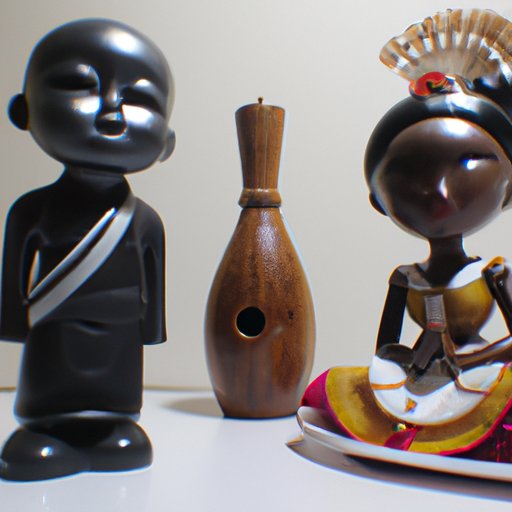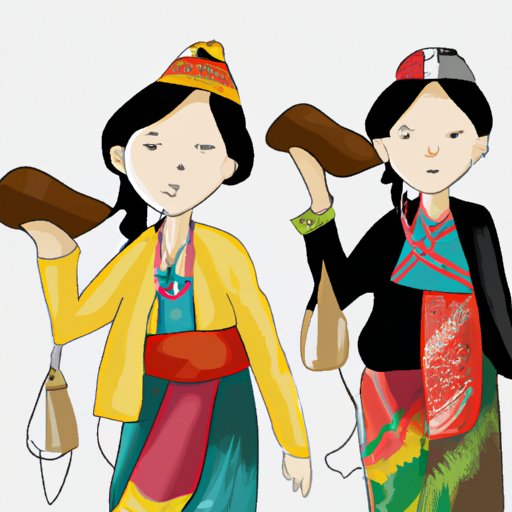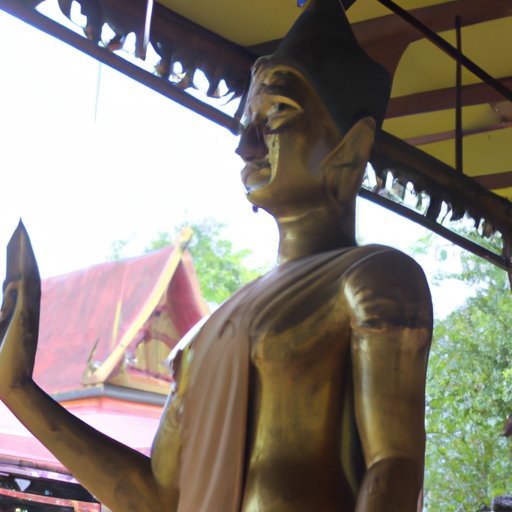Introduction
A pure culture is a single species of organism that can be grown in isolation from any other organisms. This type of culture is important for understanding how different types of bacteria interact with each other and how they are affected by their environment. By studying a pure culture, scientists can gain insights into the behavior of a particular species and how it interacts with other species in its environment.
Understanding a pure culture is essential for medical research, as it allows scientists to study the effects of different drugs on a specific organism. Additionally, it can help researchers understand how certain bacteria behave within a given environment and how they might affect the health of humans and animals.

Analyzing the Origin and History of the Pure Culture
The origin of the pure culture dates back to the mid-19th century when German biologist Robert Koch developed a method for isolating a single species of bacteria from a mixture of microbes. Koch’s methods allowed him to isolate a single species of bacteria from a sample, which he then used to identify the cause of diseases such as cholera and anthrax. This breakthrough was instrumental in the development of modern germ theory and the understanding of infectious diseases.
Since then, the use of pure cultures has become increasingly important in the fields of microbiology and biochemistry. Scientists have used pure cultures to study the effects of antibiotics on bacteria, the mechanisms of microbial growth, and the behavior of bacteria in different environments. Additionally, pure cultures have been used to develop vaccines and treatments for various diseases.
In recent years, the use of pure cultures has become even more important due to the emergence of antibiotic-resistant bacteria. By understanding the behavior of these bacteria in a pure culture, scientists can develop new antibiotics to combat them.
Exploring the Benefits of the Pure Culture
The use of pure cultures has many benefits. For example, they allow scientists to study the behavior of a single species of bacteria without interference from other species. This is especially important in medical research, as it allows scientists to study the effects of different drugs on a specific organism without the risk of contamination from other organisms.
Additionally, pure cultures can provide valuable insights into the behavior of bacteria in different environments. For example, scientists can study the effects of temperature, pH, and other environmental factors on the growth and behavior of bacteria. This information can be used to develop treatments for diseases or to improve food safety.
Finally, pure cultures can also be used to develop new vaccines and treatments for various diseases. By understanding the behavior of a specific species of bacteria in a pure culture, scientists can develop new antibiotics to fight against them. This is especially important in the fight against antibiotic-resistant bacteria.
Investigating the Cultural Practices of the Pure Culture
The cultural practices of a pure culture can vary greatly depending on the region and the people who live there. Generally speaking, however, most pure cultures share certain beliefs and rituals. For example, many cultures believe in ancestor worship, where they honor their ancestors by performing special ceremonies and rituals. Other common practices include traditional healing methods, such as using herbal remedies and chanting, as well as religious ceremonies.
In addition to these shared cultural practices, the people of a pure culture may also have unique customs and traditions. For example, some cultures may have special festivals or celebrations, while others may have specific rites of passage for children or adults. The people of a pure culture will often have their own language and customs, which can be seen in the way they dress, eat, and interact with one another.
Examining the Role of Religion within the Pure Culture
Religion often plays an important role in a pure culture. In many cases, the beliefs and practices of a particular religion will shape the culture and influence the way the people live their lives. For example, some cultures may have strict rules about marriage, while others may be more open to different lifestyles. Additionally, religious beliefs may also influence the way people view death, illness, and other aspects of life.
In some cases, religious beliefs may also be used to explain natural phenomena. For example, some cultures may believe that the sun is a god, while others may interpret rain as a sign of divine blessing. Additionally, religious beliefs may be used to justify certain behaviors or provide guidance on moral issues.

Comparing and Contrasting the Pure Culture to Other Cultures
When comparing and contrasting a pure culture to other cultures, it’s important to consider both similarities and differences. For example, many cultures share similar beliefs and rituals, such as ancestor worship and traditional healing methods. However, each culture has its own unique language, customs, and beliefs, which can be seen in the way they dress, eat, and interact with one another.
In addition to these similarities and differences, it’s also important to consider how each culture is affected by its environment. For example, some cultures may be more isolated than others, while others may be more exposed to outside influences. Additionally, the climate and geography of a region may also influence the culture, as certain regions may be better suited to certain activities or lifestyles.

Identifying the Challenges Faced by the Pure Culture
The people of a pure culture may face a variety of challenges, both internal and external. For example, some cultures may struggle to maintain their traditions and beliefs in the face of rapid modernization or globalization. Additionally, the people of a pure culture may be at risk of discrimination or exploitation due to their lack of representation in mainstream society.
In order to address these challenges, the people of a pure culture may need to look for ways to adapt to change while still preserving their traditions and beliefs. This may involve finding ways to incorporate modern technology while still maintaining traditional values, or creating organizations to represent the interests of the culture.

Profiling the People Who Live in the Pure Culture
The people of a pure culture are often highly diverse, with different backgrounds, experiences, and perspectives. While some may have lived in the same area for generations, others may be newcomers or refugees from other countries. Despite their differences, the people of a pure culture share a common bond in their shared culture and traditions.
The people of a pure culture often have a strong sense of pride and identity, which can be seen in the way they dress, speak, and interact with one another. They may also have a deep appreciation for their land and the environment, and may work together to protect their natural resources. Additionally, the people of a pure culture may have a strong sense of community and may work together to support one another in times of need.
Conclusion
The pure culture is an important part of our world and understanding it can help us gain insights into the behavior of a particular species and how it interacts with other species in its environment. By studying the origin and history of the pure culture, exploring its benefits, investigating its cultural practices, examining the role of religion, comparing and contrasting it to other cultures, and profiling the people who live in it, we can gain a better understanding of this unique culture and its importance in our world.
Overall, the pure culture is an incredibly diverse and fascinating part of our world, and further exploration of it can help us gain valuable insights into the behavior of different species and the effects of different environments on them. By learning more about the people, history, and practices of a pure culture, we can gain a better understanding of its importance and how it has shaped our world.
(Note: Is this article not meeting your expectations? Do you have knowledge or insights to share? Unlock new opportunities and expand your reach by joining our authors team. Click Registration to join us and share your expertise with our readers.)
